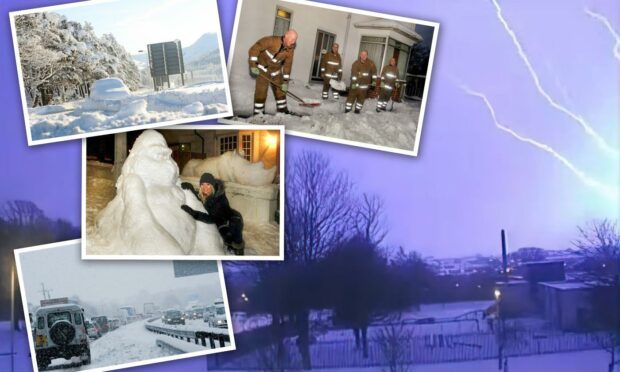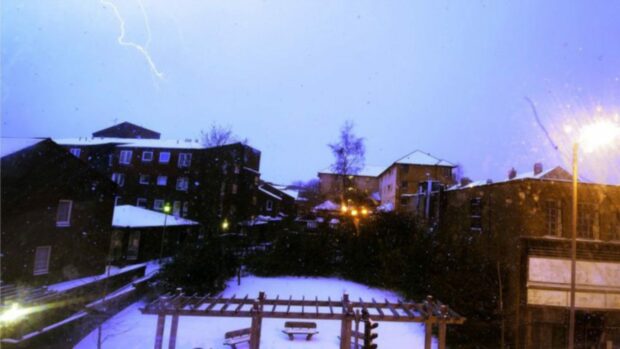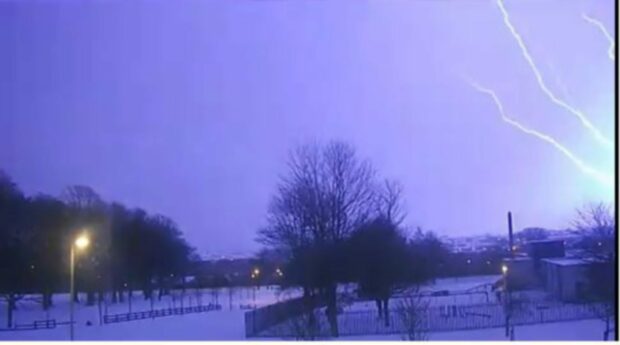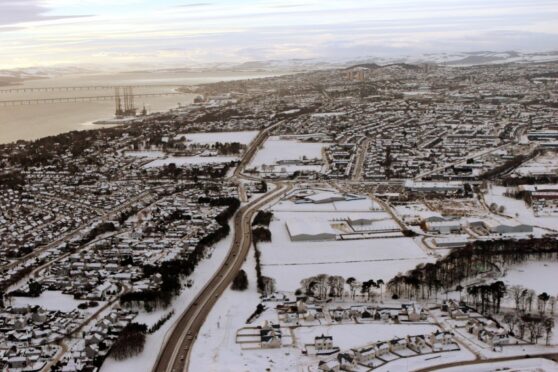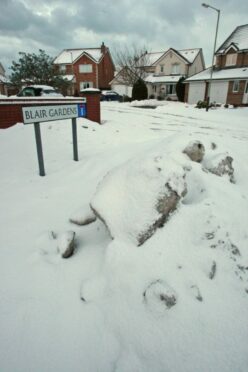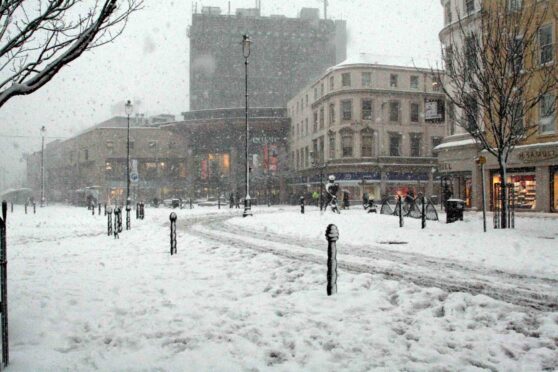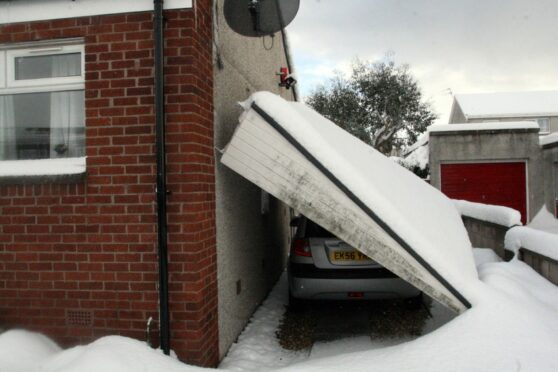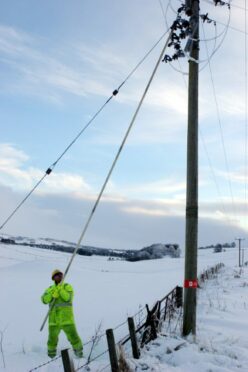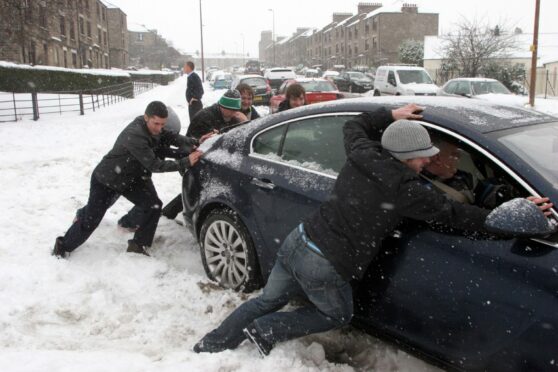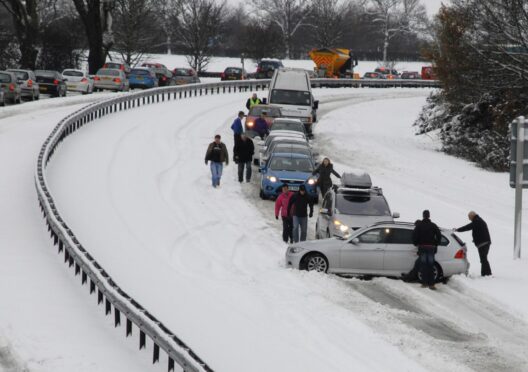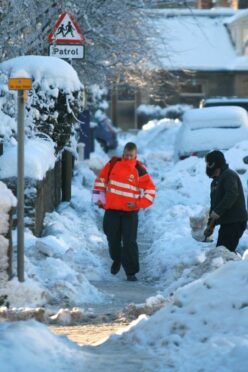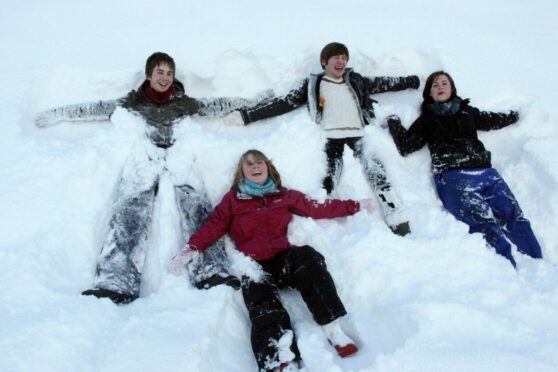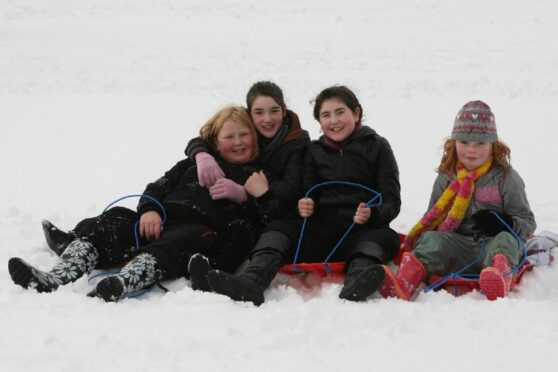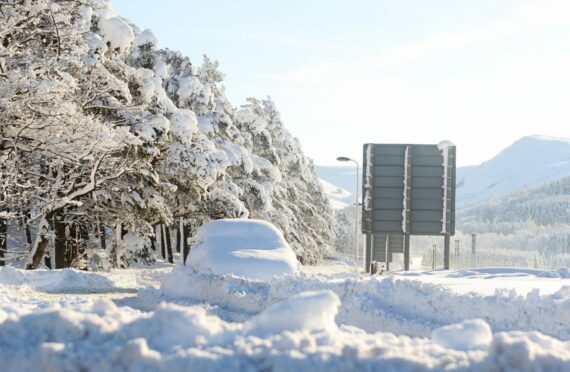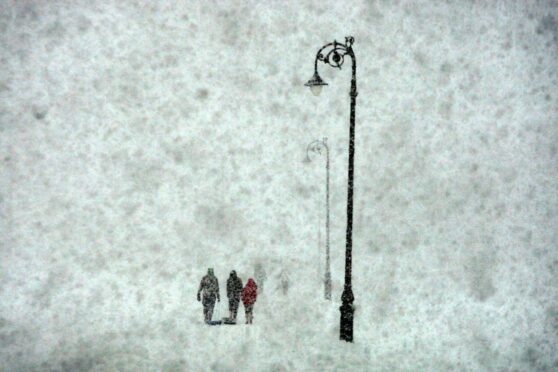Storm Arwen has devastated communities and caused the kind of catastrophic destruction not seen since the extreme thundersnow weather phenomenon that swept Tayside in 2010.
The high winds, snowfall and chaos experienced by many over the weekend took place exactly 11 years on from the start of the big freeze of 2010.
Temperatures began to plunge at the end of November that year, leading to the coldest December since Met Office records began.
But many Dundonians will recall the cold front also brought a rare weather event to the region – thundersnow.
The unusual phenomenon of thunder and lightning accompanied by snow occurs when freezing air moves over warm water.
The climatic conditions around Dundee and the North Sea late that November created the perfect storm.
But the chaos that ensued was less than perfect, and a terrifying wake-up call in the early hours for many on November 28.
The rumbling, rolling thunder and cracks of lightning continued throughout the morning along with increasingly heavy snowfall.
In scenes reminiscent of winters of yesteryear, 8 to 10 inches of snow fell quickly across Dundee, Fife, Perth and Kinross and Angus.
The white stuff wreaked havoc across the region.
Lightning and wind had damaged buildings, the travel network ground to a halt with jack-knifed lorries, gridlocked roads and cancelled trains.
Meanwhile, thousands of homes lost power with engineers desperately working around the clock to restore electricity to rural communities.
Around 3,500 properties were affected by blackouts when snow-laden trees tumbled onto power lines in Tayside and Fife.
Tayside Police headquarters were struck by lightning taking out the non-emergency number, while thousands of pounds of damage was caused at the Arnold Clark garage in Balfield Road by a lightning strike.
Residents hoping for respite and a thaw after the thundersnow abated were left disappointed.
With no sign of the mercury rising, schools and roads were closed, and both NHS Tayside and the council went onto emergency footing.
Non-urgent operations were cancelled and councils focused their staffing efforts on clearing roads and repairing damage.
But the chill continued into December and the average temperature that month for Scotland was -1°C (30°F).
As the poor weather continued, the impact was also felt on postal services during what is already a busy time of year for posties.
It wasn’t all misery, however, with many people – young and old – taking advantage of time off school, uni and work to enjoy snowing, sledging and mass snowball fights.
And there was great community spirit as people checked on elderly friends, neighbours and relatives.
A partial thaw in mid-December was followed by another cold front during the festive season, bringing more snow and ice, but with it came a white Christmas.
This year Dundee’s odds for a white Christmas are 3/1, so although the white stuff hasn’t hung around the city this time, it could reappear in a few weeks.
But that will bring little comfort to those still suffering from the fallout of last weekend’s weather.
There has been an unprecedented impact on the power network with tens of thousands of homes still cut off the grid.
Storm Arwen may only have lasted a few hours and the initial snow chaos lasted a few days, but it could be weeks before some communities are fully connected and back to normal.
If you enjoyed this, you might like:
